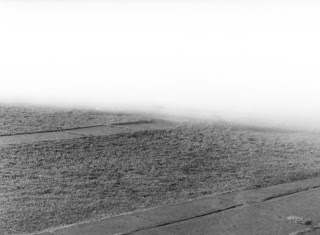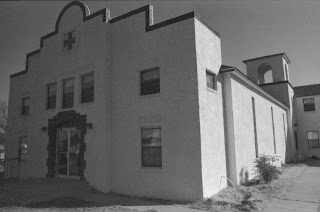Camera: Nikon F (one silver, one black)
Lens: Nikkor 50mm f/1.4 and Zoom-Nikkor 28-45mm f/4.5
Film: Kodak Tri-X 400
Mini-review of the setup:
Camera: These two cameras just had to be shot together and I had to use the classic Tri-X with them. I got these in for a general service with not much of a backstory on how they came together but they both cleaned up well and are very smooth in operation. Shutters are quiet for 35mm SLRs and the controls give a nice solid impression. I've only had a short time of handling the Nikon F and I see why it set a standard against all other SLRs were judged.
Viewfinders are a bit dark compared to some other, newer SLR options but I still found it easy to focus them given the split image rangefinder on both focus screens. This is consistent with the era, Pentax Spotmatics are not exceedingly bright either but with a bit of use you can get comfortable using them. It's just harder to deal with when you have a more modern body with a nice bright viewfinder and then switch immediately back to the vintage piece.
Loading film was pretty quick and easy, even never having done it before but I definitely needed someplace to put the back down. If it were my camera I may have risked trying to tuck it under an arm during reload but definitely not with a client's. I found the film to slip into the spool easily and start winding with no problems. I bulk load film so just tore a small corner off the leader so it would fit into the spool.
As for carrying, the body is a bit small and thin again for my size of hands, so adding a grip would likely be in the cards. No big self-timer lever or something to fold fingertips around, so it didn't feel all that secure. Balanced well with the 50/1.4, I'd have no problem carrying this for longer sessions or while traveling but with the heavier zoom, it was a bit much and I'd want a shoulder strap or bag to put it in.
After use notes: I can see why folks compare these early Nikon Fs to Leicas. They carry a similar hefty sense of quality. Dense, built for extended use. Designed to work.
Lens: Nikkor 50/1.4. A classic normal/short portrait lens of general Double-Gauss design. Much improved over the earlier 5.8cm f/1.4 (Nikon's first SLR lens), this stayed largely the same for many many years of production and is the basis for the Nikon normal lens up until their recent introduction of the modern 58/1.4.
I've had quite a few Nikkors pass through my hands here at TheFix HQ and while nearly all of them are indeed ruggedly built and working fine mechanically (a certain Micro 55/2.8 one of the notable exceptions), they are not the smoothest or most precisely built pieces of optics as their proponents are ready to exclaim.
The vintage Pentax glass like the Takumars are nearly always smoother and well-damped in their focusing helicals, the aperture rings with less play. One may say, well, the Takumars went to the semi-pro or hobby photographer, whereas the Nikkors were bought by the pros to be put to work and that may well be true to a point but there have been some highly worn and beat up examples of Pentax Takumars that I've seen that still focus absolutely smooth, and I've seen multiple very clean Nikkors that obviously never saw pro or extended use and they still have dried out focus grease and more play in overall lens fitment.
This isn't to say that the Nikkors don't give a feeling of quality, just that for someone that hasn't ventured outside of their vintage Nikon realm since the 70s, you may be interested to know there are other quite nice options.
I'd no idea the Zoom-Nikkor 28-45mm f/4.5 even existed as a lens until I got these cameras in for service. I'm not very much of a Nikon historian so this isn't the only lens I'm not aware of, I'm sure.
That being said, this was the first production wide-angle zoom and offers a surprisingly versatile range of focal lengths. I'm mostly a prime lens user so any zoom capability at all is an interesting feature but 28mm is definitely wide angle and 45mm is decidedly in "normal" range so you can do quite a bit even though the numerical spread isn't too great like newer lenses. With some work done by the photographer in composition and leading lines and other such tools, it can provide many different looks to a scene.
I had fairly fast film and broad daylight so was able to set it to f/8 where any weaknesses should be minimized. A couple of times I opened it up to f/4.5 so it may show issues on those images.
Film: Kodak Tri-X is one of the classic emulsions, an industry standard. For many people, this is their only b&w emulsion and it is very versatile. This particular bit of it was poorly stored and so has lots of base fog, which effectively reduces film speed. It also ends up having a lot more grain.
After Scanning Notes: These are some of the worst scans I've ever done. The film looks terribly grainy, mushy and overall not at all like what the negatives actually look like in person. I'm increasingly frustrated by the scanner's results on 35mm.
Black Nikon F w/50mm f/1.4 lens:
Silver Nikon F w/28-45mm f/4.5 lens:













































































No comments:
Post a Comment